Lobo Minnesota: Long before wolves were re-introduced back into Yellowstone National Park, the wolf topic was controversial. In the 1930s, a giant Canadian wolf became infamous for slaughtering deer in the Lake Itasca area. Here is the story of the man who ended the predator’s bloody career.
by Leon Pantenburg
Editor’s note: This is an excerpt from my book : Downriver: A Mississippi River Canoe Voyage. Graphic images of wolves eating deer are included.
Bemidji, Minnesota: Bemidji, population about 10,000, is the first city on the Mississippi. It’s about one week by canoe from Lake Itasca and 100 miles south of the Canadian border.
Bemidji is an Ojibwa word “Bay-may-ji-ga-maug” meaning “lake with cross waters” referring to the Mississippi River, which crosses Lake Bemidji.
The four of us pulled into “The Trading Post”, a convenience store on the shore of Lake Bemidji near the river to stock up on ice cream and other snacks. While everyone else was inside, I wandered outside to look at a glassed-in display with an ancient-looking wolf mount inside a small, corrugated tin building.
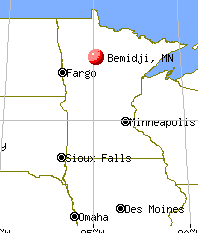
The story was fascinating – few animals ever become legends.
In the 1930s, though, the area between Red Lake and Lake Itasca hosted such an animal. It was a huge male timber wolf with a propensity for slaughtering deer. Eventually the wolf – dubbed “Lobo Minnesota” – became the subject of radio alerts and newspaper reports and its whereabouts became the subject of countless discussions.
Trappers and hunters from all over the state came to the area to try to collect the $500 bounty the wolf’s hide would bring. Despite extensive efforts to trap or poison Lobo, the wolf managed to outwit all challengers for 12 years.
The man who finally stopped the wolf’s bloody career was Algot Wicken, a trapper who specialized in wolves.
All this info came from the sign next to the mounted wolf. I went inside, asked a few questions and found Wicken was still alive and lived nearby. The store manager came up with a telephone number, and a quick call got me an invitation to visit.
Wicken, 93 at the time, lived with relatives in a neat, white frame house. He couldn’t hear very well, was frequently “down in the back” and could hardly see. But he still had a tough, wiry physique from a lifetime spent in the outdoors. His eyes light up when he tells the story of Lobo Minnesota.
“In 1926, the biggest wolf tracks anybody had ever seen around here started showing up around Lake Itasca State park,” he said, “There were a lot of deer in the park and they attracted many wolves.”
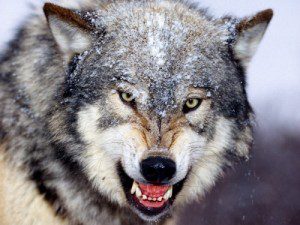
Lobo Minnesota was as big as the trapper who caught him.
Predator control was a routine part of park maintenance, and rangers tried to keep the predator-game ratios balanced. Normally, a wolf wouldn’t be actively pursued unless it caused abnormal damage to animal populations. But Lobo was anything but normal. He seemed to hate deer and slaughtered any he came across. During one two-week period, rangers found 36 deer Lobo had killed. Some he didn’t even bother to eat.
“That animal was vicious!” Wicken said, “I found a doe Lobo had crippled, and he didn’t even bother to finish it off. I guess he broke the deer’s back out of sheer meanness.”
Other trappers told of the wolf picking up fawns by the back like a dog might retrieve a newspaper and carrying them off.
Local game wardens had no luck catching the wolf. He didn’t act like normal wolves and didn’t have regular behavior patterns. Lobo didn’t appear to have a mate and traveled alone, mostly at night. He never returned to a kill and was impossible to poison, since he wouldn’t go near carrion. The lone wolf had outwitted trappers for so long he seemed invincible.
Finally, Herman Gordon, the state game ranger, invited any hunters or trappers who wanted a chance at the wolf to try. For further incentive, a $200 bounty was placed on the wolf’s head. Trappers flocked to Lake Itasca to take a crack at the notorious wolf.

A wolf would not have been pursued if it acted normally, but Lobo Minnesota wasn’t normal.
“Times were hard around here during the 1930s, because of the Great Depression,” Wicken recalled. “There was no work except at seasonal logging camp jobs. One year, my father worked all winter logging and made $112. That had to last the family all year.”
At the time, Wicken was a trapper. Mink hides sold for 35 cents, muskrat brought 10 to 12 cents, and foxes were trapped for the $3 bounty.
Of all the people after Lobo, Wicken seemed most likely to succeed. He was an experienced wolfer, with more than 70 timber wolves to his credit. Wicken brought all his skill into play.
Lobo had never been caught in a steel trap, so Wicken reasoned a wire snare might work.
“I studied the wolf’s tracks and saw he stayed around a stand of spruce trees more than any place else,” Wicken said. “I got a heavy steel cable, set it between two trees, and waited to see what happened.”
That night Lobo was caught in the snare and broke free.
“I have always been surprised the wire didn’t hold him,” Wicken said. “There were signs of a terrible struggle, and the snow was pawed to the ground all around. He must have jumped and lunged until the cable broke.”
Never again did Lobo walk into a snare. For two years, Wicken tried in vain to catch the wolf again. Finally, he set a steel trap between two carefully camouflaged snares. The next day, a blizzard hit, and when Wicken snowshoed in to check the set, he found Lobo caught by a front paw.
I was listening, scribbling furiously in my notebook, and had unconsciously moved to the front of my chair. Wicken had started out talking calmly, but some 50 years later, he still got excited telling certain parts of the story. His thick Norwegian accent got even thicker, and his bifocals couldn’t hide the light of battle that came to his eyes.
“Great yumping yiminy! That was an animal! He knew he was caught, but he stood there growling,” Wicken said. “He lunged toward me, and would have torn my throat out if he could!”
“When I got closer, he quit growling and stared me right in the eye,” Wicken continued. “It was like he was trying to say, ‘What kind of a man are you to do this to me?’ He was still undefeated!”
Wicken killed the wolf with his .22 rifle. He was elated at making a winter’s wages with one wolf bounty, and proud he had succeeded where so many others had failed.
He got closer and knelt down to examine his prize. His elation turned to surprise, then horror at what he’d done. The snare from two years before was still around the wolf’s neck, and the wire had worn a hole about the size of a half dollar.
“I’ve always regretted that the wire didn’t break clean,” Wicken said. “Even though Lobo was a merciless killer, I’ve always been sorry for the pain and suffering I must have caused him.”
Wicken took the wolf to nearby Bagley, Minnesota, and word spread that the great Lobo had been caught. Newspapers and radio announcers told the story, and people flocked to see the legendary predator. Wicken collected the bounty, had the wolf mounted, and sold it for $500 to a local sporting goods store.
Even though Lobo’s bloody life was over, the legend continued to grow. Park wardens estimated Lobo had killed one deer every three days for several years, or about 1,200 total, at Lake Itasca State Park. In prime condition, Lobo weighed about 120 to 140 pounds – as much as the wiry trapper who caught him. By far, Lobo was the biggest, fiercest, wolf to ever be caught in that part of northern Minnesota.
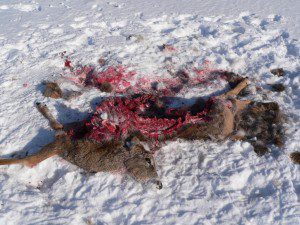
Lobo Minnesota slaughtered deer, often without eating anything from the carcass.
Though Wicken’s reputation as a wolfer was firmly established, he never tried to catch another wolf, and he quit trapping entirely the next year. The fur market, like many other occupations during the Depression, fell upon hard times. Fur prices plummeted, and Wicken went back to work as a logger.
Wicken retired about 1950, but didn’t stop his vigorous outdoor lifestyle. He went deer hunting for the last time when he was 85, and said he’d still take his daily walk if his back hadn’t given out.
Gid Graham, in his book “Animal Outlaws,” wrote that Lobo was a victim of conflicting values.
“The career of this animal cannot be measured by man’s standards and viewpoints. Man condemned this animal because he killed deer and wild creatures. According to the standard of the wolf, he did no wrong. The Great Spirit created him a carnivorous animal and placed deer, elk, and buffaloes for him to live on.
“The wolf avoided man’s stock and fowls, but lived on his natural prey, the deer. Therefore, man is culpable – he has exterminated God’s wild creatures who were placed here for nobler purposes than wanton slaughter, and forced the wolf to prey on his livestock to live and raise his family.
“There are two standards of appraisal – that of man, and that of the wolf,” Graham wrote.
Lobo is still a tourist attraction. After talking to Wicken, I went back to look at the wolf display again. The mounted creature is a parody of a once-magnificent animal. The glass eyes stare blankly at slightly different angles, and the lips are curled woodenly back over artificially-white fangs. The pelt is dull and will probably succumb to old age and sunlight before too much longer.
But the legend remains.
Please click here to check out and subscribe to the SurvivalCommonSense.com YouTube channel – thanks!

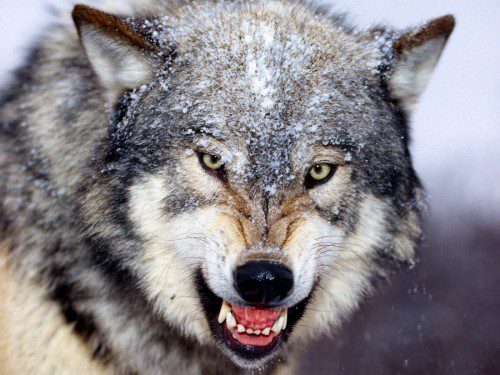

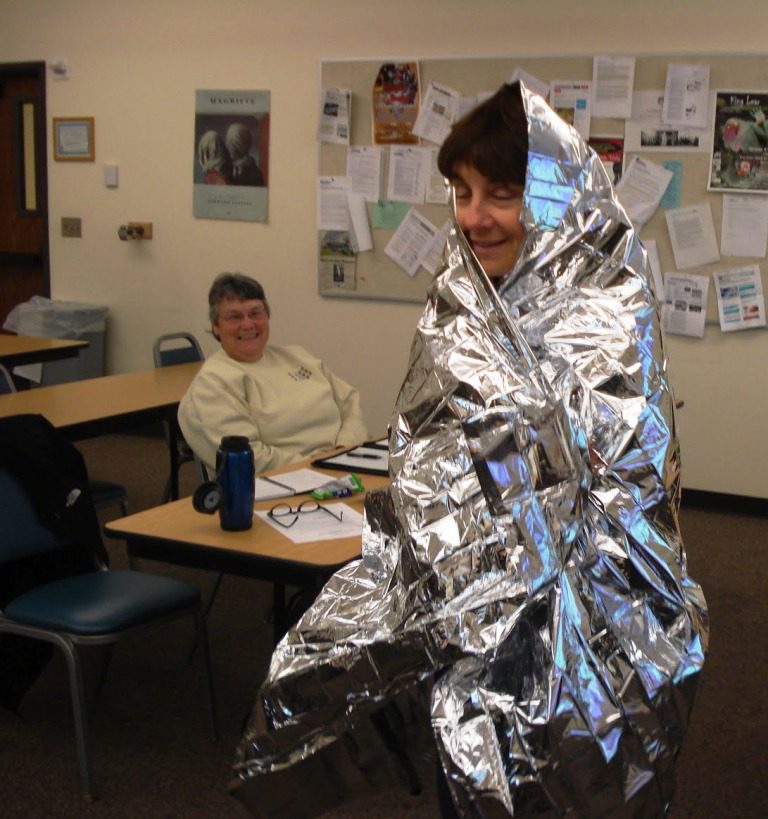
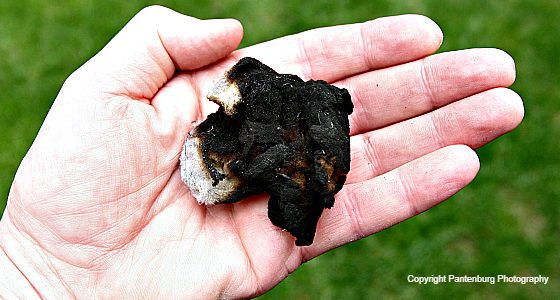
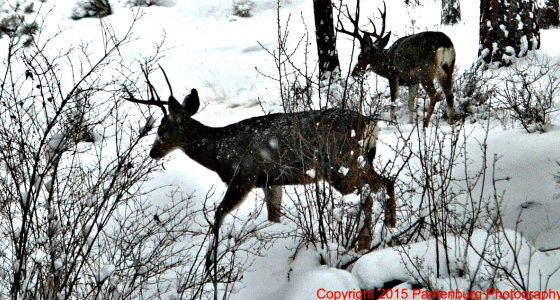
Leave a Reply